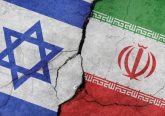As Bosnia and Herzegovina continues to come to terms with its violent past, many still wonder if the country will ultimately disintegrate. This was a prognosis recently put to Zeljka Cvijanovic, the current Prime Minister of Republika Srpska, a sub-region. She dismissed the question out of hand. Still, it was clear from her presentation at the Royal United Services Institute in London and in a subsequent interview for BBC HardTalk that her primary allegiance (as a citizen and politician) is to Republika Srpska, rather than to Bosnia and Herzegovina.
There are structural and constitutional reasons for this. Bosnia and Herzegovina is composed of 142 municipalities in two de facto autonomous regions: Republika Srpska and Federation of Bosnia and Herzegovina, the latter further divided into ten cantons. This is not to mention the additional independent district, Brcko. The country’s three main constituent groups (Bosnian Muslims, Serbs and Croats) are represented in a bi-cameral parliament, with the executive based on power sharing arrangements and a rotating tri-partite presidency. To make things even more complicated, a High Representative – an international official with broad powers – has overseen this complex structure since the 1995 Dayton Peace Accords. So much for democratic self-rule.
In the past, some scholars and policy-makers argued that Republika Srpska’s cessation would solve a number of war-related issues and finally bring peace. Controlled by Bosnia Serb leadership, most of the secessionist arguments are based on ethno-national differences and the rights for self-determination. Officials there have shown scant interest in a series of attempts to reform the existing constitutional structure. In addition, public polls repeatedly show that citizens of Republika Srpska feel only a small attachment to the country as a whole.
The public mood is more worrisome than repeated calls for independence, or at least very loose confederation, by Republika Srpska’s President Milorad Dodik. Mr Dodik lacks support from Croatia and Serbia, its neighbours, and any major international actor. Nevertheless, his calls for independence are a powerful political weapon, especially during electoral campaigns. Even if such efforts have no chance of succeeding, it may complicate on-going negotiations over entry into the European Union.
All of this made Mrs Cvijanovic’s task difficult. Still, her presentation was a respectable attempt to tone down Republika Srpska’s secessionist image. On multiple occasions she claimed Bosnia and Herzegovina was a ‘functioning democratic state’ which has made substantial progress since 1995. She stressed individual rights – a sticking point for constitutional reform – arguing that every Bosnian citizen deserves the same rights and privileges. As the first female Prime Minister at any level in Bosnia, she also emphasized the role women have finally started to play in her region’s politics.
She also expressed confidence that Bosnia was on track to join the EU. ‘Of course that I know that Republika Srpska will not enter the EU without the Federation’, she remarked. Indeed, integration into Euro-Atlantic structures was a factor in all her government’s recent business and financial reforms – especially cutting red tape – which have significantly improved attractiveness for foreign investors. She proudly noted that it is often significantly faster to set up a business in her region than in the Federation.
More can be done. But overall, Mrs Cvijanovic’s words come as a breath of fresh air.








No Comment